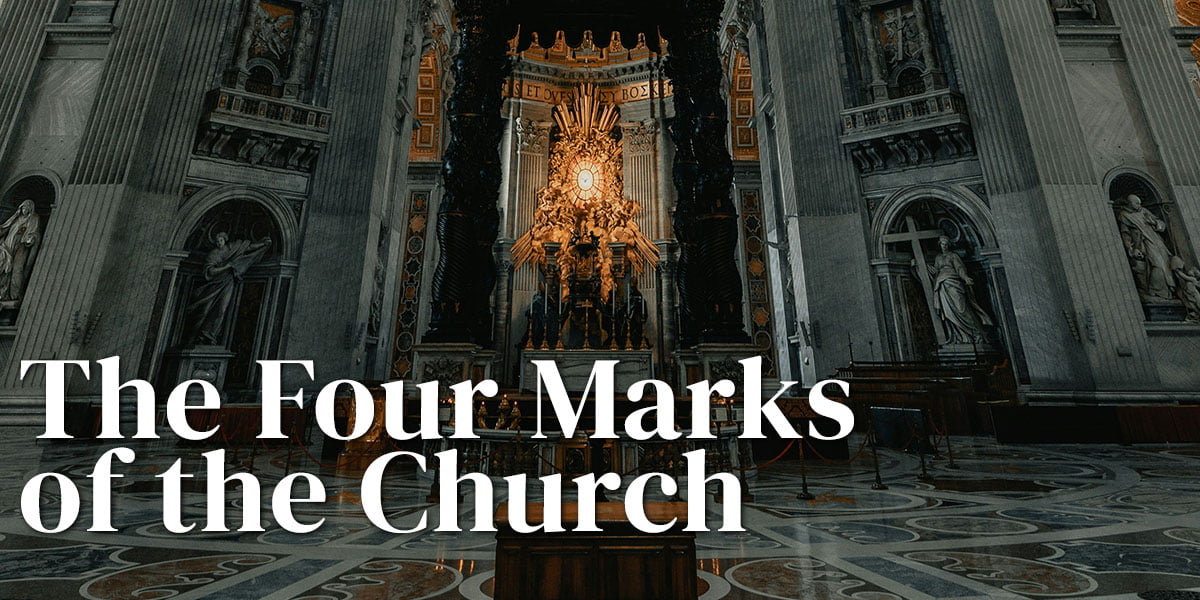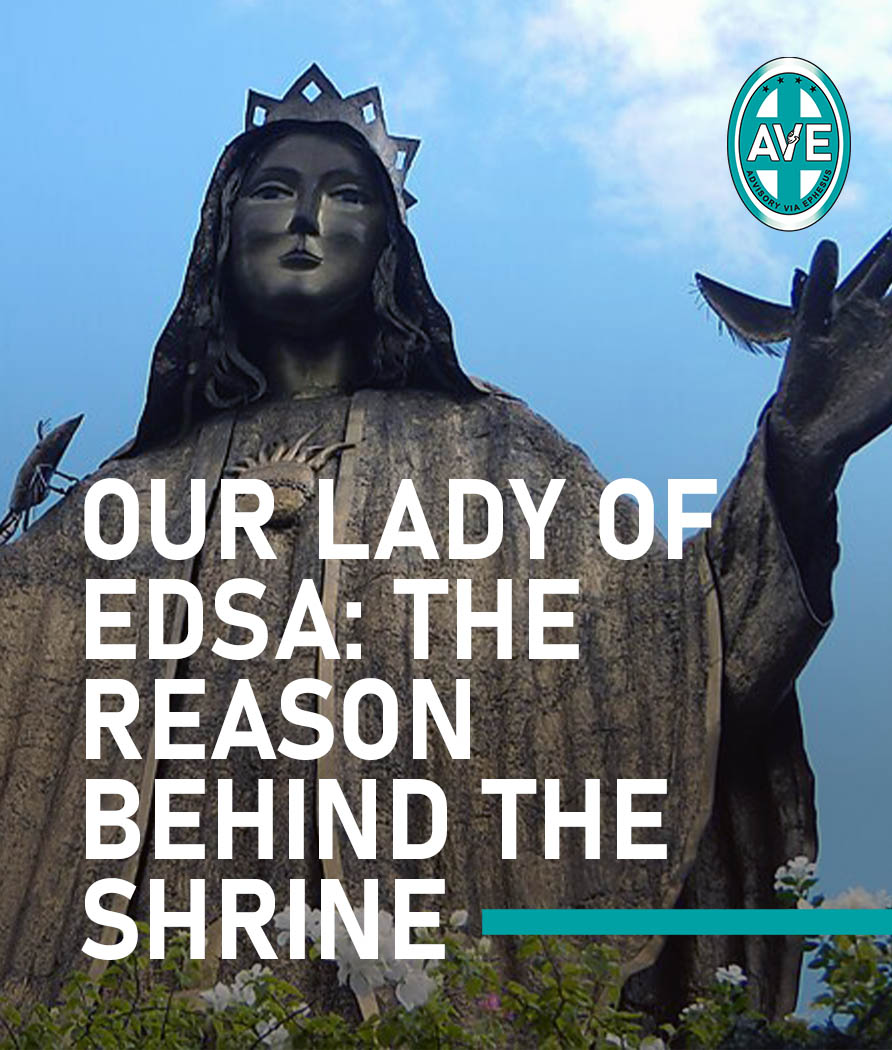In recent years, the rise of the information age and the internet has brought forth renewed attention to a scientific hypothesis rooted in strict biblical fundamentalism from the early 19th century. The notion of a flat earth, fueled by the widespread use of social media, has gained immense popularity on platforms like Youtube, attracting hundreds of millions of views and giving rise to a fervent fascination with conspiracy theories. Although the concept of a flat earth may seem unfamiliar and peculiar to many, it originated in the 1830s as the brainchild of a quack doctor named Parallax.
In her book Flat Earth: The History of an Infamous Idea, Garwood (2008) provides a detailed account of Parallax, the individual credited with coining the term Zetetic Astronomy. Parallax, also known as Samuel Birley Rowbotham (1816-1884), was a traveling lecturer and was managing a radical socialist commune linked to Welch, a cotton manufacturer, and utopian socialist Robert Owen.
Parallax achieved success with his Zetetic Astronomy campaigns, employing the Baconian method which encouraged a do-it-yourself approach to investigating nature and using common sense as the primary method for interpreting empirical evidence. His public appearances gained considerable attention, leading him to organize paid lectures and debates. These discussions on religion and astronomy were particularly controversial during that era, as noted by Christina Garwood.
Parallax’s reasons for seeking to convince the British public that the earth was not a globe were simple. Evidently an ingenious character, who delighted in controversy and dispute, he could not resist the ultimate challenge of toppling orthodox ideas and a fact so established as the earth’s rotundity. During his time as a socialist lecturer, he had seen the passions that scientific and religious topics could evoke and, moreover, the money that people would pay to listen to a feisty debate on these themes.(Christina Garwood, Flat Earth, 2008)
Using experimental findings, mathematical calculations, and various Biblical passages, Parallax put forward the argument that the Earth was positioned at the center of the universe, had an age of less than six thousand years, was created within six twenty-four-hour periods, and was rapidly approaching destruction by fire. In addition to advocating an extremely strict literal interpretation of the Bible, this viewpoint, now known as young-earth creationism, embraced an apocalyptic understanding of Earth’s history.
Parallax further his theory, as described by Garwood (2008) by proposing that the Earth was a flat disc with its central point being the North Pole, while the South Pole was not considered to exist within this framework. The circular plane was surrounded by a colossal barrier of ice. Parallax regarded the extent and termination of this ice wall as unanswerable questions for any human.
The flat earth movement gained traction in Britain during the 19th century, with Christian polemicists aiming to protect biblical teachings from perceived threats of science. According to Garwood (2008), this belief in a flat earth offers insights into the origins of contemporary creationism, which is often associated with the work of Seventh Day Adventist geologist George McCready Price (1870-1963).
Parallax’s world view encompasses a range of subjects, including conspiracy theories, science, astronomy, creationism, doomsday prophecies, socialism, utopia, radical politics, life longevity and human immortality, alternative medicine, and bible fundamentalism. Having expounded his view’s on life in the 1840’s he threw himself to the public and effectively bolstered his campaign for his Zetetic propaganda.
Christian Utopia
During the late 19th century, John Alexander Dowie played a significant role in the establishment of the city of Zion, which emerged during a time characterized by a fervent evangelical revival. According to Garwood (2008), this period was notable for its emphasis on personal salvation, the baptism of the Holy Ghost, extraordinary healing, and a sense of anticipation regarding the Second Coming of Christ. Consequently, numerous religious organizations, summer camps, publications, and Bible schools surfaced across the United States. In the 1930s, Wilbur Glenn Voliva, the successor of Dowie, garnered nationwide attention for his unconventional beliefs and advocacy for a flat earth.
Dowie invested a staggering $1,250,000 to purchase 6,500 acres of Illinois farmland, roughly equivalent to the size of Chicago O’Hare airport. Garwood (2008) further illustrated, within a year, Zion City sprung up on the plains, located just a few miles south of the Wisconsin border and conveniently connected to the railway connecting Chicago and Milwaukee. Over the next three decades, Zion City gained notoriety as the epicenter of the contemporary flat-earth movement.
Similar to contemporary “scientific” creationists, Voliva strongly adhered to the belief that the Bible should be regarded as an infallible authority on all matters pertaining to the natural world. According to Garwood (2008), Voliva went as far as denouncing any scientific discoveries that contradicted a literal interpretation of the scriptures, considering them to be influenced by Satan. By steadfastly asserting that the Earth was flat, he resolutely compelled people to adopt extreme positions and make an unequivocal decision.
Voliva utilized the radio station called WCBD to spread his religious message and promote the idea that the Earth is flat. Despite facing controversies and economic difficulties, he remained steadfast in his beliefs and continued to make apocalyptic predictions about the end of the world. However, his power and influence waned over time, and he eventually died in 1942, leaving behind a legacy that some residents of Zion still believe in the flat Earth theory.
So, while the city of Zion may have transformed into an ordinary town, its history and the beliefs of its former residents continue to intrigue and captivate. The legacy of John Alexander Dowie and Wilbur Glenn Voliva, with their controversial teachings and apocalyptic predictions, remains a fascinating chapter in the history of religious movements in America. And in the hearts and minds of a few, the idea of a flat Earth lingers on, a reminder of the enduring power of belief.
Origin and the Early Church Fathers
The belief in a flat Earth has deep historical origins, tracing back to ancient civilizations like the Sumerians and Babylonians who lived in Mesopotamia, present-day Iraq, from around 4500 to 500 BC. Garwood (2008) provides an elucidation of this concept. However, a significant shift in perspective occurred in the late sixth century BC when the teachings of the Pythagoreans challenged the prevailing belief in a flat Earth.
Greek writers such as Plato, Eudoxus, Euclid, Aristarchus, and Archimedes shared the belief that the Earth was round. According to Garwood (2008), Aristotle’s geocentric cosmology, which placed a motionless sphere at the center of the universe with planets orbiting around it in perfect concentric circles, became the prevailing view in Western cosmology for nearly two millennia.
The early church fathers, including St. Augustine, advocated against a literal interpretation of scripture. They believed that the salvation of the soul should take precedence over focusing on the specific details of the natural and physical world. St. Augustine, in particular, demonstrated a willingness to embrace the consensus reached by natural philosophers when there was careful investigation and sufficient evidence supporting their findings. Nothaft asserted:
He warns his readers that the knowledge attained by non-Christians about the natural world should not be recklessly opposed by incompetent exegetes, who extract false wrong readings from Scripture (a warning evidently not heeded by Cosmas). Instead, believers should strive to “show that whatever [the philosophers] have been able to demonstrate from reliable sources about the world of nature is not contrary to our literature. (Nothaft, 2011)
To provide some background on the aforementioned quote, it is worth noting that in the past, the term “philosophers” or “natural philosophers” was used to refer to individuals who would be considered scientists in today’s terminology.
Early Christian author Firmianus Lactantius was the first flat- earther who attacked the globe earth philosophy, Lactantius as described by Garwood (2008) “An eloquent writer, if incredibly biased, he attacked pagan (Greco-Roman) philosophy on manifold points, including its teaching that the earth was a globe. In the third book of his Divine Institutions (c. 302-11), ‘On the False Wisdom of the Philosophers’, Lactantius ridiculed the notion of a sphere where people on the other side lived with their feet above their heads, where rain, snow and hail fell upwards, where trees and crops grew upside-down and the sky was lower than the ground.”
On some account that St. Augustine was a flat-earther, Nothaft clarified: “As a matter of fact, Augustine’s views have sometimes been assimilated to those of his predecessor Lactantius (c. 250–c. 325), who famously ridiculed the idea that the earth could be spherical, because people in the southern hemisphere would have to have their feet above their hands and trees would grow downwards (Divine Institutes 3.24). It is far from obvious how Lactantius’s refutation, which is hardly a serious foray into matters of natural philosophy, but rather a rhetorical exercise, must be understood.” (Nothaft, 2011)
It appears evident that the criticism did not concern the shape of the earth, but rather the belief in the existence of Antipodes.
According to Sanford, E. M. & Green, W. M. (1965) in the book The City of God Against the Pagans, St. Augustine contended that they fail to observe that even if the world is held to be global or rounded in shape, or if some process of reasoning should prove this to be the case, it would still not necessarily follow that the land on the opposite side is not covered by masses of water. Furthermore, even if the land there be exposed, we must not jump to the conclusion that it has human inhabitants.”
According to Nothaft (2008) Augustine clearly observes that the concept of a spherical heaven assumes the presence of a second pole of rotation, indicating his overall understanding and familiarity of the spherical model of the classical Greek or pagan education. Yet, he presents this idea to his audience as hypothetical, with the intention of emphasizing that such inquiries are secondary importance for the pursuit of a blessed life.
Garwood described the period: “In the sixth and seventh centuries, St Augustine’s stance on the shape of the earth was supported, albeit vaguely, by the most popular encyclopedist of the era, St Isidore of Seville (died in 636), and more directly by the so-called father of English history, the Venerable Bede (673–735). Along with St Ambrose’s and St Jerome’s, their work was standard educational fare in monastic and cathedral schools and libraries, and so, too, was the lesson that the earth was a globe.” (Christine Garwood, Flat Earth)
St. Hilary of Poitiers passed away in 366, followed by St. Ambrose of Milan in 397, St. Augustine in 430, Cassiodorus in 575, and St. Isidore in 636. This notable sequence demonstrates that in every century, there existed individuals who affirmed the tradition of the earth’s spherical shape. Both Cassiodorus and Isidore particularly witnessed and actively advocated this concept.
Additionally, in the eighth century, a prominent figure and Doctor of the church St. Bede the Venerable puts beyond no doubt what he holds concerning the shape of the earth in his work De Rerum Natura which he unmistakably adheres to the Ptolemaic system:
The world, consisting of heaven and earth,” he says, “is the entirety of all things. The world is shaped into a perfect globe by the four elements, the fire, by which the stars shine; the air, by which all living creatures breath; the water which communicates with the earth by surrounding and penetrating it; and the earth itself, which, being in the middle of the world and the lowest part of it, is suspended immovably, being poised by its rotating surroundings.” (Chap. III.)-“We call the earth a globe, not as if the shape of a sphere were expressed in the diversity of plains and mountains, but because, if all things (terrestrial) are included in the outline, the earth’s circumference will represent the figure of a perfect globe. Hence it is that the stars of the northern hemisphere appear to us, but never those of the southern; while on the other hand, the people who live on the southern part of the earth cannot see our stars, because the globe obstructs their view.” (Chapter XLVI.)-“The firmament is the heaven which is of subtle and fiery nature; it is spherical, and equally distant on all sides from the center of the earth.
Another doctor of the church, St. Isidore of Seville, speaks about the earth and its place in the universe.
The sphere of heaven, that is the universe, is a thing round in shape, the center of which is the earth, which is by it sur rounded on all sides at an equal distance.”-“The heavenly sphere moves from the east to the west during a day and a night in the space of 24 hours, during which time the sun finishes its course above the earth and below it.” (Book IX, chapter 34.)-“There is an eclipse of the sun, when the moon, on the thirtieth day of its course, crosses the same line upon which the rays of the sun travel, and throwing itself in the way of the sun renders it in visible. For the sun gives us the impression of disappearing as long as the orb of the moon stands in front of it.” (Book III, chapter 52.)–“There is an eclipse of the moon, when it runs into the shade of the earth. For the moon is believed not to have its own light but to be illumined by the sun, wherefore it fails when the shade of the earth comes between it and the sun.” (Book III, chapter 59.) “The stars are immovable, and are carried, fixed in the heavens, in an uninterrupted course. They do not fall down during the day but are obscured by the splendor of the sun.” (Book III, chapter 62.) “The cause that makes either day or night is the sun being either above or below the earth.
During the time of St. Augustine, signs of societal collapse were apparent. The Roman civilization had been destroyed, leading figures like Cassiodorus and St. Isidore sought solace in religion and science. St. Augustine’s works, particularly City of God, were widely read and recommended. Cassiodorus and St. Isidore also emphasized the importance of secular knowledge and encouraged its study in monasteries. St. Bede also became an influential teacher.
Dark Ages?
The Middle Ages is sometimes regarded as a time of significant intellectual progress in human history. However, it is commonly depicted as a period characterized by ignorance and irrationality, often referred to as the ‘Dark Ages’ spanning from approximately 450 to 1450 in Europe. This era is frequently linked to notions of barbarism, superstition, and a belief in a flat earth, alongside widespread disease, suffering, and adversity.
It is commonly believed that intellectual pursuits suffered during this time as the surviving knowledge from the late Roman Empire was suppressed by the Christian Church, which prioritized a literal interpretation of scriptures over rational inquiry, hindering scientific advancements. Garwood (2008) pointed out that this perspective is in fact influenced by the Conflict view and gained popularity through two books released in the 19th century: Andrew Dickson White’s A History of the Warfare of Science with Theology in Christendom and John William Draper’s History of the Conflict Between Religion and Science.
The notion of historical revisionism highlights a contentious conflict between the church and sciences, exemplified by the myth surrounding Galileo. Nonetheless, Professor Peter Harrison provides an insight into the Galileo affair in his highly regarded book, The Territories of Science and Religion, which is considered a vital source on the perceived clash between science and religion. Harrison wrote:
But to cite this as an instance of science–religion conflict is to misconstrue the context. For a start, the Catholic Church endorsed the scientific consensus of the period, which, on the basis of the available evidence, held that the earth was stationary in the middle of the cosmos. To this extent it might be better to characterize the episode as a conflict within science… rather than between science and religion. Second, the first use of the Galileo affair for propaganda purposes was by Protestants seeking to discredit Catholics, so that it was initially given a role in conflicts within religion. (Peter Harrison, 2015)
Despite proponents of the “Dark Age” theory, like William Draper and Andrew Dickson White, emphasizing the concept of Christian belief in a flat Earth, Garwood (2008) argues that it is crucial to acknowledge that early Church leaders did not interpret the Bible literally in regard to the natural world. They did not subscribe to the notion of a flat Earth, but rather understood it as a spherical planet. A number of them approached biblical texts allegorically or intentionally steered clear of the subject and any possible conflicts it could create.
Garwood (2008) argues that the idea of a flat earth became irrelevant from the twelfth century onwards due to the overwhelming presence of written and visual depictions of a spherical earth. For instance, John of Sacrobosco’s renowned astronomical text, On the Sphere (De sphaera, c. 1250), and the philosophical works of notable scholars like Thomas Aquinas (1225–74) and Jean Buridan (1300–58) all support the notion of a round earth.
Nothaft (2011) also argued that historians have long emphasized that “Flat earthers” were extremely uncommon in medieval literature and Columbus did not have to persuade any educated people of the earth’s roundness. However, references to the medieval belief in a flat earth and the supposed position of the medieval Church on this issue persist outside of academic literature.
Bolenius, as cited in Garwood (2008), chose a rendition from Alphonse de Lamartine’s “Life of Columbus,” which was a favored option among writers in the nineteenth century looking to depict the tales of great men of exploration and science. Bolenius added a preface in the narrative, specifically adapted for her young audience, to emphasize Columbus’s achievements.
During Columbus’ time, it was commonly believed that the earth was flat. According to Bolenius (2008), people also held the belief that the Atlantic Ocean was infested with monstrous creatures capable of devouring their ships, and treacherous waterfalls that would cause their fragile vessels to plummet into destruction. Columbus had to confront these misguided beliefs in order to convince men to embark on his voyages. He was confident in the roundness of the earth and believed that by sailing westward, he could discover a quicker route to India. The French have always held admiration for courage, and Lamartine, a French writer, pays homage to the intangible courage possessed by Columbus, which surpasses mere physical bravery. As you continue reading, take note of the various ways in which Columbus demonstrated his greatness.
The idea that the Middle Ages was a period of intellectual darkness and belief in a flat Earth is largely a misconception. While the era certainly had its challenges and limitations, it is important to recognize that the Church did not endorse a flat Earth and many scholars of the time understood the Earth to be spherical. The conflict between science and religion during this period was often exaggerated and selectively used for propaganda purposes. The myth of a flat Earth persisted mainly outside of academic literature and was perpetuated by writers in the 19th century seeking to depict a conflict between religion and science. Overall, the notion that the Middle Ages were a period of ignorance and superstition is a simplistic view that does not accurately reflect the period . Nothaft (2011) pointed out, Yet it may be claimed that there is a further sense in which belief in a flat earth is a profoundly modern phenomenon.
Critique
Today, flat earth evangelists continue to push forward their campaign by promoting Zetetic Astronomy, conspiracy theories, and a distrust of institutions. They take advantage of the public’s interest in unconventional and peculiar online content, which is already inundated with mainstream material. As a result, their monetized digital content has garnered substantial attention, accumulating hundreds of millions of views and counting. Moreover, with the support of celebrities and influencers, the flat earth movement has gained momentum and established a presence in our digital landscape. Such phenomenon can be seen as a subtle shift in perspective, similar to a Parallax Move.
However, the essence remains the same – painted in the colors of biblical fundamentalism, the pamphlet-style publication formerly employed by Parallax now takes the form of YouTube shorts and the “mini but many” pieces of evidence, such as the 200 proofs Earth is not a spinning Ball by Eric Dubay. Enthusiasts and individuals attending conventions are committed to the notion that they can conduct science through common sense and a do-it-yourself mindset, disregarding the established scientific methodology.
The purpose of this critique is to analyze the historical context surrounding the belief in a flat earth, rather than providing a detailed analysis of individual evidences. As a side note, I will provide examples of common arguments put forth by flat-earthers. While the following illustrations may not directly pertain to the aforementioned discussions, it is crucial to examine their structure. Due to the abundance of examples, I will mention only two for the sake of brevity.
The majority of flat earth argument is presented in the following formats:
Weighing the equation: Gravity must be a lie because Newton is a Freemason. (Ad hominem)
Indeed, in addition to his practice of alchemy and other aspects of his life worth exploring. Now, let us delve into the illustration I have provided below:
When Jose Rizal was exiled in Dapitan, Philippines from 1892 to 1896, he made significant discoveries. Accoding to Arcayos (2022), he discovered new species including Draco Rizali (Wandolleck), a type of flying dragon, Rachophorous Rizali (Boetger), a previously unknown species of toad, and Apogonia Rizali (Heller), a small beetle. It is important to separate his contributions as a scientist from his membership in the Freemasonry. His masonic association doesn’t change the fact that he discovered those species. Yes, he may have been a freemason, but he still made those discoveries. Although we do not endorse him solely as a freemason, we recognize and appreciate his significant contributions. Dismissing the evidence without considering his findings borders fanaticism.
Dubay (2023) raises thought-provoking questions regarding Newton’s theory of gravitational force in his Youtube video The Mystery of Gravitation. While I do appreciate the questions he raises about the lack of a mechanism for gravitational force in the Newtonian model, it is worth noting that many scientists have posed similar questions throughout history, leading up to Albert Einstein’s groundbreaking work.
The problem with the questions posed by Dubay is that they fail to acknowledge Einstein’s theory of general relativity, which explains gravity as the warping of space and time rather than a force. This theory is considered one of the most significant discoveries in human history. Instead of dwelling on outdated models, Dubay could strengthen the credibility of his arguments by disproving the latest advancements in the field. He could begin with quantum gravity, which is poised to supersede general relativity. A review of related literature may be helpful.
Weighing the equation: A (Globe) is false therefore B (Flat) is true (argument from the negative)
The evidences presented in various flat earth publications often rely on oversimplified comparisons between explanation A and explanation B for different phenomena. However, scientists employ a range of reasoning methods, such as inductive, deductive, and abductive reasoning. Abductive reasoning, for instance, involves inferring the best explanation when trying to understand a phenomenon. Scientists propose hypotheses that can best explain the cause of a known effect, considering numerous competing explanations, rather than relying on simple false-true dichotomies like A is False, therefore B is True.
Conclusion
What significance does shape hold for us as Catholics? How much weight does it carry? I recall a question from one of our CROSS meetings (a humble catechetical circle for public schools): If Jesus had chosen to die on an electric chair instead of a cross, would it change anything? The response was rather straightforward: Would it truly make a difference? If he had chosen that chair, then so it would be. Therefore, shape does not matter when it comes to matters about our salvation, as salvation is not contingent on any physical feature. Shape is merely a geometric property that belongs to the realm of the observed, the earth, and all its earthliness.
Belief in the contemporary iteration of the flat earth dogma can be traced back to the lineage of biblical fundamentalists and creationists who base their religious teachings on Zetetic Astronomy. However, it is important to note that the Catholic faith does not incorporate this particular aspect in its teachings, nor does it have a direct connection to the history of flat earth or any form of unorthodox astronomy that borders occultism such as Zetetic. It is more closely aligned with the literal interpretations of supernatural phenomena described in the Bible, rather than scientific principles.
Science, by nature, is a constantly evolving discipline where current knowledge can be challenged and debunked by new discoveries and evidence within several period of time. This is because paradigms naturally shift in this field, with newer theories often providing better explanations for various phenomena. One of the key characteristics of science is its fallibility. However, the problem arises when religious and doctrinal beliefs are imposed upon it, as this requires a commitment to its supposed infallibility, which contradicts the very essence of scientific inquiry.
Conversely, a scientific theory can become dogmatic when it refuses to acknowledge valid arguments and disregards alternative explanations based on stronger evidence, particularly when they challenge established theories. It is not uncommon for theories to be mistaken as undeniable facts, and unfortunately, some scientists intentionally blend the two to further their own personal beliefs, akin to biblical evangelists. This approach implies that if one questions these “facts,” they are deemed unintelligent or foolish, displaying incredulity, as if belief is necessary regardless of contradictory evidence.
In order to further expand our understanding of the natural world, it is crucial to approach the debate surrounding the shape of the Earth with a healthy dose of skepticism. Whether we find ourselves inclined towards the idea of a flat or spherical Earth, it is essential to remain open-minded and continuously explore and investigate. While lessons in earth’s geometry may offer some valuable insights, as advised by St. Augustine, they should be considered secondary in importance compared to our overall pursuit of a blessed life. In the end the Truth which can save the souls of doubting Thomases is more important than newly discovered truths which are fruits of the unbiased scientific method which should be different from mere scientism.
References:
Arcayos, E.G. (2022). DOST-PCAARRD Commemorates Jose Rizal as a Naturalist Through Scientific Conference. pcaard.dost.gov.ph. [https://www.pcaarrd.dost.gov.ph/…/dost-pcaarrd…](https://www.pcaarrd.dost.gov.ph/…/dost-pcaarrd…)
Betten, F. S. (1923). The Knowledge of the Sphericity of the Earth during the Earlier Middle Ages. The Catholic Historical Review, 9(1), 74–90. http://www.jstor.org/stable/25011935
Bolenius, E.M. (2018)The Boys’ and Girls’ Readers: Fifth Reader, p. 113
Dubay, E. (2023) The Mystery of Gravitation. Youtube. https://youtu.be/GzRbJ4lJKmU
Harrison, P. (2015). The Territories of Science and Religion. Chicago and London: University of Chicago Press.
Garwood, C. (2008). Flat Earth: The History of an Infamous Idea. New York: Thomas Dunne Books.
Nothaft, C. P. E., University, V., & in cooperation with the Philosophy Documentation Center. (2011). Augustine and the Shape of the Earth. Augustinian Studies, 42(1), 33–48. https://doi.org/10.5840/AUGSTUDIES20114213
Sanford, E. M. & Green, W. M. (1965). The City of God against the Pagans, vol. 5, Book XVI–Book XVIII, Chapters I–XXXV. London: Heinemann, pp. 49, 51.











